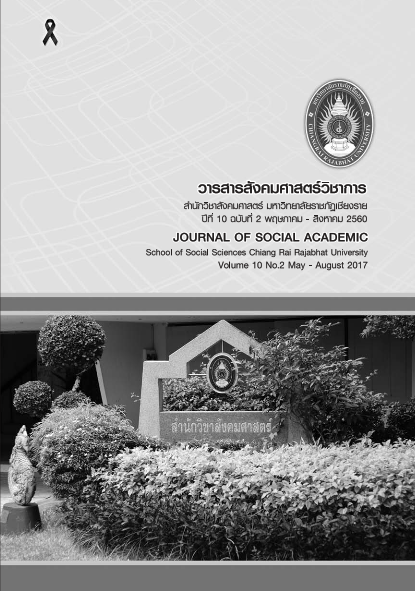บุคลิกภาพตามทฤษฎีจิตวิเคราะห์
Main Article Content
บทคัดย่อ
ซิกมันด์ ฟรอยด์ เป็นผู้สร้างทฤษฎีจิตวิเคราะห์ (Psychoanalysis Theory) อธิบายว่า บุคลิกภาพของบุคคลมีโครงสร้างซึ่งประกอบด้วยลักษณะ 3 ประการ ได้แก่ 1) อิด (Id) ซึ่งประกอบด้วยสัญชาตญาณพื้นฐาน 2 ประเภท คือ สัญชาตญาณแห่งการมีชีวิต (Life Instinct) และสัญชาตญาณแห่งความตาย (Death Instinct) โดยที่อิดแสดงออกโดยอาศัยหลักแห่งความพึงพอใจ (Pleasure Principle) เมื่อไม่มีโอกาสแสดงออกจะถูกกดไว้อยู่ในจิตใต้สำนึก 2) อีโก้ (Ego) ซึ่งทำหน้าที่ควบคุมพฤติกรรมที่เกิดจากความต้องการของอิด โดยอาศัยกฎเกณฑ์ทางสังคม และ หลักของความเป็นจริง (Reality Principle) มาช่วยในการตัดสินใจ และ 3) ซุปเปอร์อีโก้ (Superego) แสดงออกโดยยึดหลักมโนธรรม อุดมคติ และหลักจริยธรรม (Moral Principle) แต่ละบุคคลจะมีความเข้มแข็งของโครงสร้างบุคลิกภาพทั้ง 3 นี้ ไม่เท่ากัน และมีวิธีการจัดการกับโครงสร้างบุคลิกภาพทั้ง 3 แตกต่างกัน จึงทำให้แต่ละบุคคลมีบุคลิกภาพแตกต่างกัน ฟรอยด์อธิบายว่า เหตุที่บุคคลมี ความเข้มแข็งของโครงสร้างบุคลิกภาพทั้ง 3 นี้ไม่เท่ากัน เนื่องจากความสมบูรณ์ของขั้นพัฒนาการบุคลิกภาพใน 3 ระยะแรก คือ ขั้นปาก (Oral Stage) ขั้นทวารหนัก (Anal Stage) และขั้นอวัยวะเพศ (Phallic Stage) ซึ่งเป็นพัฒนาการในระยะ 5 ขวบปีแรกของชีวิต
Article Details
รายละเอียดของลิขสิทธ์
เอกสารอ้างอิง
Corey, Gerald. (2012). Theory & practice of group counseling. (8thed.). Belmont, CA: Brooks/Cole.
Freud, S. (1917). Introductory lectures on psychoanalysis. (Standard Edition, Vols. 15 and 16).
. (1923). The ego and the id. (Standard Edition, Vols. 19).
Mishne, J. M. (1993). The evolution and application of clinical theory: Perspectives from four psychologies. New York: The Free Press.
Sharf, Richard S. (2012). Theories of Psychotherapy and Counseling Concepts and Cases. (5th). Belmont, California: Wadsworth /Thomson Learning.
Siddharth Nayak. (2016). What are different levels of consciousness and thinking?. Retrieved March 1, 2017, from https://www.quora.com/What-are-different-levels-of-consciousness-and-thinking.
Wurmser, L. (2009). The Superego as herald of resentment. Psychoanalytic Inquiry, 29(5), 386-410.


